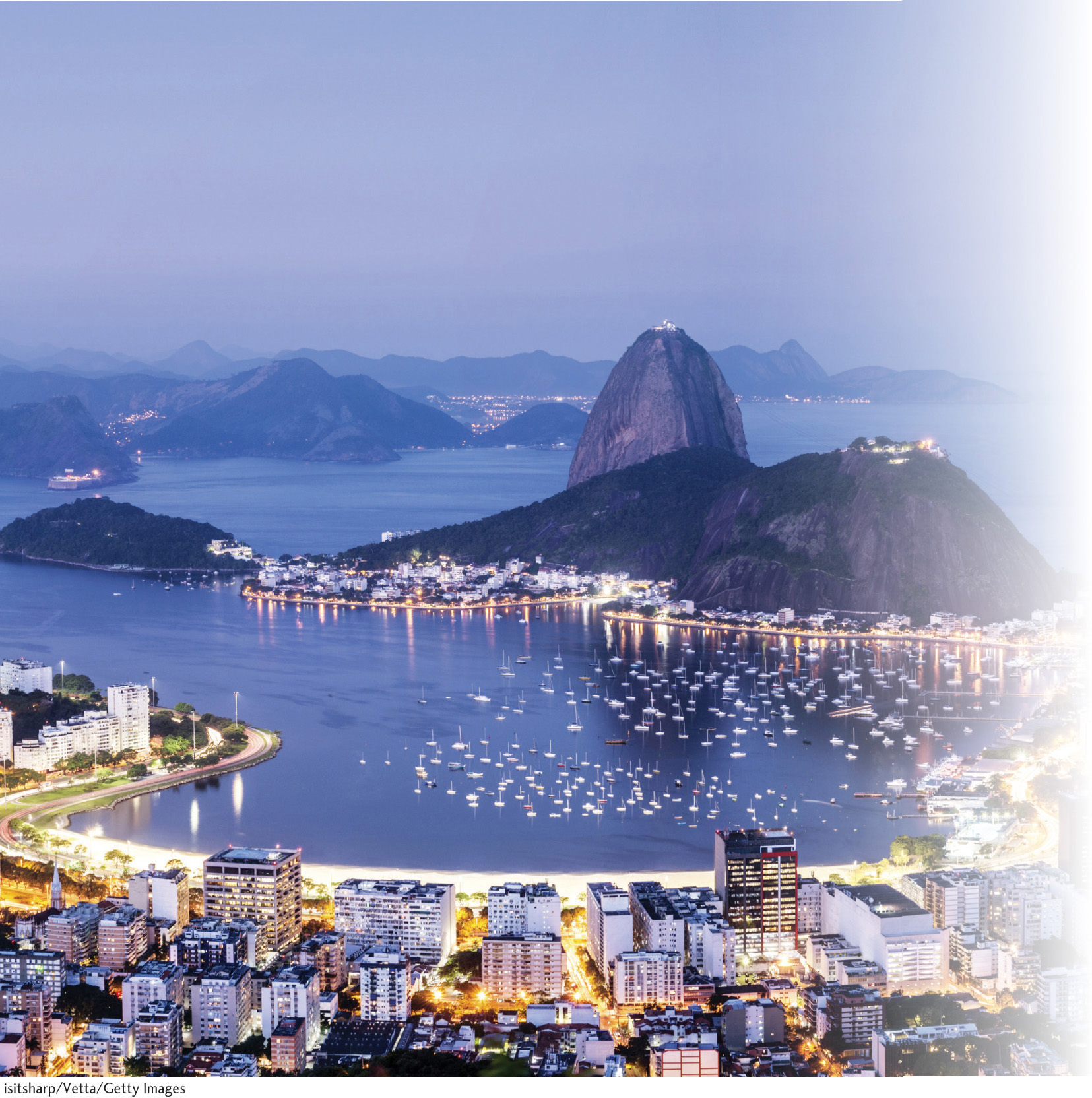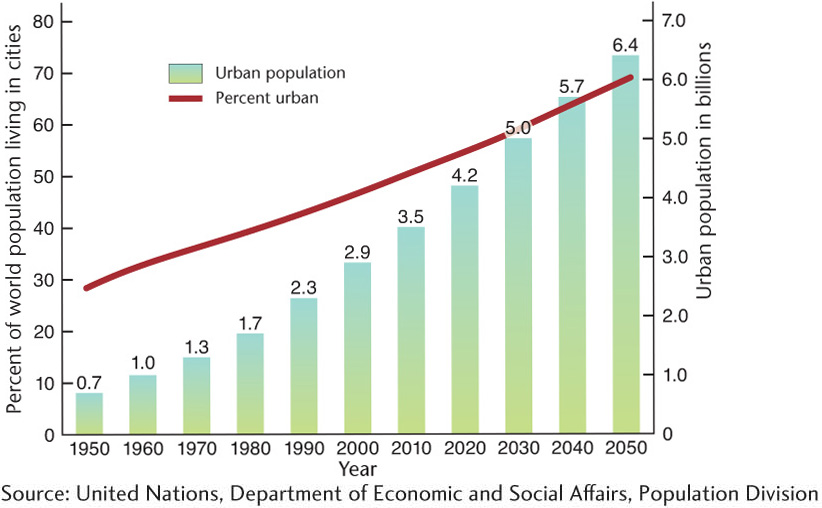A World of Cities
412
CHAPTER 10
URBAN GEOGRAPHY
A World of Cities

What are some of the major environmental and social impacts of an increasingly urbanized world?
A view of Rio de Janiero, Brazil, looking toward Sugarloaf Mountain.
(isitsharp/Vetta/Getty Images.)
Go to “Seeing Geography” to learn more about this image.
413
LEARNING OBJECTIVES
▪10.1
Describe the historical and contemporary regional patterns of urbanization, and the models geographers use to understand cities.
▪10.2
Identify the ways that migration has shaped the growth of cities, how cities have grown and changed, and how humans get around within cities.
▪10.3
Discuss the notion of global cities and some of the problems associated with them.
▪10.4
Recognize the ways that human and natural worlds interact in cities, and the effects on the health and well-being of those living in cities.
▪10.5
Read an urban landscape and identify the trends shaping cities today and into the future.
Imagine the 2 million years that humankind has spent on Earth as a 24-hour day. In this framework, settlements of more than a hundred people came about only in the last half hour. Towns and cities emerged only a few minutes ago. Yet, it is during these “minutes” that we see the rise of civilization as we know it. Civitas, the Latin root word for civilization, was first applied to settled areas of the Roman Empire. Later it came to mean a specific town or city. To civilize meant literally “to citify.”
Today, just over half—54 percent—of human beings live in cities. By the year 2050, the United Nations estimates that this figure will stand at 70 percent (Figure 10.1). The World Bank estimates that cities grow by a combined total of 3 million people each week. The cultural geography of the world will change dramatically as we become a predominantly urban people. (Figure 10.1)

In this chapter, we apply the five themes of human geography to consider overall patterns of urbanization, learn how urbanization began and developed, and discuss the differing forms of cities in the developing and developed worlds. We will see the many ways that migration has shaped the world’s urban population, as well as how mobility within cities is facilitated or hindered. The spectacular rise of the so-called global city, along with its universally recognizable form but also the many social problems that go along with it, will be considered. The interaction of built environments and natural elements and processes that occur in cities is discussed. Finally, we turn to processes currently shaping cities, as well as how you might “read” urban landscapes from a cultural geography perspective.
414